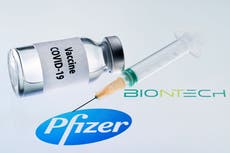Test and Trace figures improve after government changes contacting method
Close Covid contacts aged under 18 no longer being traced individually, government says

The government has reported a marked improvement for its Test and Trace figures after changing the way in which under-18s are contacted by the system.
Close Covid contacts under the age of 18 are no longer being traced individually, according to the Department of Health and Social Care, which introduced the new approach following discussions with public and local tracing partners.
Instead, a parent or guardian in the contact’s household is asked to confirm they have told the child to self-isolate. If they have done so, the child is recorded as having been successfully reached.
If no parental confirmation is provided, the usual contact-tracing routes are followed.
This change means it is no longer possible to compare historically the proportion of contacts that have been reached each week under Test and Trace.
Under the previous calculations, 60.5 per cent of close contacts were reached in the week ending 18 November.
Using the new approach, 72.5 per cent of close contacts were reported as having been reached in the week to 25 November.
"This operational improvement has resulted in an increase in the proportion of contacts reached, and the proportion reached within 24 hours,” the DHSC said on Thursday.
NHS Test and Trace has now reached more than 1 million cases (1,000,232) since the programme was first launched in May, the government added.
A total of 54.2 per cent of people who were tested for Covid-19 in the week ending 25 November at a regional site, local site or mobile testing unit - a so-called "in-person" test - received their result within 24 hours.
This is up from 50.7 per cent in the previous week, and the highest proportion since the week to 2 September.
Boris Johnson had pledged that, by the end of June, the results of all in-person tests would be back within 24 hours.
He told the House of Commons on 3 June that he would get "all tests turned around within 24 hours by the end of June, except for difficulties with postal tests or insuperable problems like that".
Baroness Dido Harding, interim executive chair of the National Institute for Health Protection, said the new figures “are a testament to the efforts made by everyone working across Test and Trace.”
“We have listened to feedback on the contact tracing process, particularly regarding our digital self-service channels to encourage those using NHS Test and Trace to engage with us and provide information,” she said. “We will not stop there, though, and work will continue to ensure NHS Test and Trace evolves and grows.”
Baroness Harding said a new Lighthouse Lab had opened in Charnwood, north of Leicester, which will help to boost England’s testing capacity, allowing 50,000 samples to be processed a day by early 2021.
Additional reporting by PA



Join our commenting forum
Join thought-provoking conversations, follow other Independent readers and see their replies
Comments